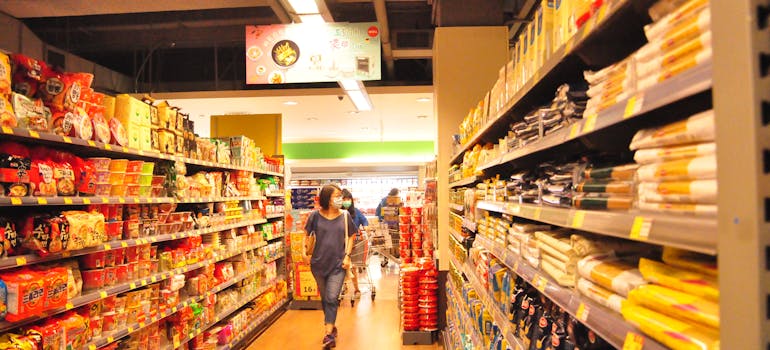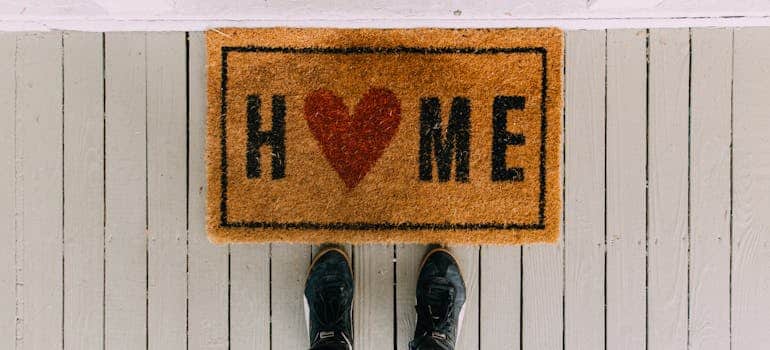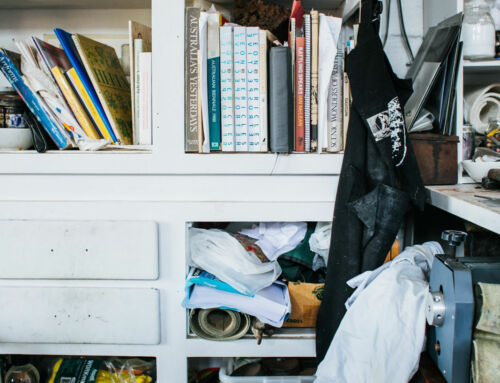Last Update
Table of Contents

There are numerous items in our homes we use daily. It seems simple – we buy, use, and then throw them away. But many of these common items are dangerous if disposed of improperly. Everyday items such as batteries or cleaning products can harm our health if we don’t take proper measures. Not only do they pose a risk for us and our families, but they’re also detrimental to the environment. That’s why the safe disposal of hazardous household items should be a priority for every household. In this guide, we’ll help you recognize hazardous products and give you practical tips and strategies on how to get rid of them safely.
Identifying Hazardous Household Items
You may have already dealt with dangerous waste when cleaning your garage, but you didn’t expect to find similar items in your house. However, some household items also require special handling. In order to safely dispose of hazardous items, you first need to know what they are. Here are some of the most common ones:
- Batteries
- Certain cleaning products
- Fluorescent light bulbs
- Pesticides
- Electronic devices
If you’re not sure, the best way to identify hazardous materials is to read the labels of the products carefully. Pay special attention to warning symbols such as the “skull and crossbones,” flame icons, or “toxic” labels. These symbols will help you identify potential risks and take appropriate precautions. What’s more, some of these labels can also provide specific instructions for disposing of the product in question.

Reduce, Reuse, Recycle
Even when you try to minimize the number of potentially dangerous items in your home, things simply tend to accumulate. The best way to counter this is to follow the rule of three Rs: reduce, reuse, and recycle.
Reduce
Reducing refers to our consumption habits. For starters, avoid buying items that you don’t need and may not even use. Also, it’s always a good idea to research products and companies before reaching for your wallet, especially for larger purchases. More and more companies are paying attention to using eco-friendly resources and production practices as well as packaging and delivery methods.
When possible, opt for products with less packaging or purchase in bulk. Or, for some items like cleaning products, you can even shop for brands that don’t use any dangerous chemicals. That way, your home will be both clean and safe.
Reuse
Before considering the safe disposal of hazardous household items, check if you can reuse some of them. For instance, you can refill cleaning product containers rather than throw them away. Of course, safety comes first, so always make sure it’s safe to use the old item in a new way.
Recycle
Lastly, when throwing away is the only way, try to recycle. Recycling helps you reduce waste in many situations – from everyday activities to moving your home. However, many hazards can also be recycled. Many communities have recycling programs or e-waste initiatives where you can drop off your electronic waste, batteries, and even some chemicals.
Proper Storage Practices
Before you dispose of hazardous items in your home, you must keep them somewhere. To keep yourself and your home safe while doing so, you must know how to store different items properly. Here are a few basic principles to guide you:
- Keep all the items in their original containers. They’re designed to hold the dangerous materials they contain safely, so it’s best to leave them that way
- Store them in a dry, cool place and keep them away from heat sources and direct sunlight
- Keep them out of reach of children or pets and ensure the cabinet or storage area is closed and inaccessible
- Never mix different hazardous materials. You don’t know what reaction that may cause, so keep different types of materials separate

Safe Disposal of Hazardous Household Items
Choose the right disposal option to ensure everything is handled safely and responsibly. Your options may vary depending on where you live, but numerous local and government programs can help.
So, you’ll need to do some research and check for recycling centers, household hazardous waste collection events, or designated drop-off locations in your area. You can also check with your local waste management authority to learn the right way to get rid of your household ways in the right manner.
There are other options, too—for instance, dumpster rentals offer a variety of solutions for waste management. Their services include residential collection of everyday waste, recycling services, yard waste collection, and hazardous waste disposal. You choose the type and size of the container you need; they deliver it. You fill it up, and they take it away, solving your hazardous waste problem.
Get Rid of Your Hazardous Waste Before the Move
Consider, for instance, planning a move. You need to deal with decluttering, organizing, packing, and disposing of hazardous waste. Finding reliable movers is the first step. For example, Centennial Moving, a moving company with almost twenty years of experience, offers services from moving and storage to car shipping. Their professional teams can help you understand the best packing practices to follow for all the problematic items.
But what about the hazardous waste you want to dispose of before moving out? A dumpster rental is a perfect option. They will help you remove everything safely and efficiently, and what’s more, quickly so you can focus on other aspects of your move.

Safe Disposal Methods
As we’ve mentioned before, safety is a priority. So, when disposing of hazardous household items, you need to follow proper safety procedures.
Start by reading and following any instructions or guidelines provided on the product label. Some items may require special handling or preparation before disposal. For example, batteries may need to be fully discharged or taped to prevent short circuits.
Also, when handling hazardous materials, always wear appropriate personal protective equipment, such as gloves, goggles, and a mask. That way, you won’t be exposed to harmful substances. When you handle chemicals, do not inhale fumes or get into direct contact with them.
Finally, consider relying on your local waste management authority or opt for a residential dumpster rental. This will ensure hazardous items are disposed of safely and in compliance with regulations.
Safeguard Your Health and Environment Through Responsible Disposal
The safe disposal of hazardous household items is the key to keeping your home and also the environment safe. However, knowing what’s hazardous and how to remove it properly and responsibly can be challenging. So, follow our tips and contribute to a safer, healthier, and cleaner world!



